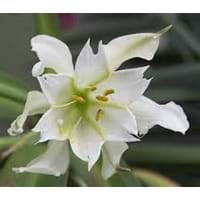Life Span
Perennial
Perennial
Type
Bulb or Corm or Tuber
Broadleaf Evergreen
Origin
South America
Southeastern United States
Types
Pamianthe cardenasii , Pamianthe parviflora , Pamianthe peruviana
Not available
Habitat
All sorts of environments
marshes, Marshy ground, Swamps
USDA Hardiness Zone
8-10
6-10
AHS Heat Zone
10-8
Not Available
Habit
Clump-Forming
Pyramidal
Flower Color Modifier
Bicolor
Bicolor
Leaf Color in Spring
Dark Green
Dark Green
Leaf Color in Summer
Light Green
Dark Green
Leaf Color in Fall
Several shades of Green
Dark Green
Leaf Color in Winter
Light Green
Dark Green
Leaf Shape
Strap shaped
Pyramidal
Plant Season
Spring, Summer, Fall
Spring, Summer, Fall, Winter
Sunlight
Partial Sun, Partial shade
Full Sun, Partial Sun
Type of Soil
Loam, Sand
Clay, Loam, Sand
The pH of Soil
Acidic, Neutral, Alkaline
Acidic, Neutral
Soil Drainage
Average
Well drained
Bloom Time
Spring, Late Spring, Early Summer, Summer, Late Summer
Early Spring, Spring, Late Spring, Early Summer, Summer, Late Summer
Tolerances
Drought
Pollution, Drought
Where to Plant?
Ground, Pot
Ground, Pot
How to Plant?
Offsets
Layering, Semi-ripe cuttings, Softwood cuttings
Plant Maintenance
Medium
Low
Watering Requirements
Keep the ground moist but not water-logged
Provide sufficient water to saturate the root zone, Requires regular watering, Water when soil is dry
In Summer
Lots of watering
Less Watering
In Spring
Moderate
Drought Tolerant
In Winter
Average Water
Average Water
Soil pH
Acidic, Neutral, Alkaline
Acidic, Neutral
Soil Type
Loam, Sand
Clay, Loam, Sand
Soil Drainage Capacity
Average
Well drained
Sun Exposure
Partial Sun, Partial shade
Full Sun, Partial Sun
Pruning
Pinch or prune as they grow to promote branching and bushiness, Remove damaged leaves, Remove dead branches, Remove dead leaves, Requires little pruning
Remove damaged leaves, Remove dead branches, Remove dead leaves
Fertilizers
All-Purpose Liquid Fertilizer, High phosphorus
All-Purpose Liquid Fertilizer
Pests and Diseases
Leaf spot, Mosaic viruses
Birds, Squirrels
Plant Tolerance
Drought
Drought
Flower Petal Number
Single
Single
Foliage Texture
Coarse
Coarse
Foliage Sheen
Glossy
Glossy
Attracts
Bees, Birds, Bumblebees, Butterflies, Hummingbirds, pollinators
Birds, Rabbits, Squirrels
Allergy
Unknown
allergic reaction, Asthma, Runny nose
Aesthetic Uses
Beautification, Bouquets, Ornamental use, Showy Purposes
Beautification, Cottage Garden, Landscape Designing, Showy Purposes
Beauty Benefits
No Beauty Benefits
Anti-ageing, Beautiful Skin, Blood purifying, Treatment of Dark Spots
Environmental Uses
Air purification
Air purification
Medicinal Uses
No Medicinal Use
Alzheimer’s Disease, anti-cancer, Anxiety, Asthma, Diabetes, Liver problems, Menstrual Cramps
Part of Plant Used
Not Available
Flowers
Other Uses
Beneficial species for attracting pollinators, Decoration Purposes
Air freshner, Grown for shade
Used As Indoor Plant
No
Yes
Used As Outdoor Plant
Yes
Yes
Garden Design
Bog Garden, Container, Feature Plant, Foundation, Mixed Border, Water Gardens
Container, Feature Plant, Landscape, Shade Trees, Street Trees
Botanical Name
HYMENOCALLIS longipetala
MAGNOLIA grandiflora
Common Name
Peruvian Daffodil, Spiderlily
Magnolia grandiflora, bull bay
In Hindi
peruvian daffodil
Magnolia grandiflora
In German
peruvian daffodil
Immergrüne Magnolie
In French
peruvian daffodil
Magnolia à grandes fleurs
In Spanish
Pamianthe
Magnolia grandiflora
In Greek
peruvian daffodil
Magnolia grandiflora
In Portuguese
peruvian daffodil
Magnólia-branca
In Polish
peruvian daffodil
Magnolia wielkokwiatowa
In Latin
peruvian daffodil
Magnolia grandiflora
Phylum
Magnoliophyta
Magnoliophyta
Class
Liliopsida
Magnoliopsida
Order
Asparagales
Magnoliales
Family
Amaryllidaceae
Magnoliaceae
Clade
Angiosperms, Monocots
Angiosperms, Magnoliids
Tribe
Clinantheae
Not Available
Subfamily
Amaryllidoideae
Magnolioideae
Number of Species
Not Available
Season and Care of Peruvian Daffodil and Southern Magnolia
Season and care of Peruvian Daffodil and Southern Magnolia is important to know. While considering everything about Peruvian Daffodil and Southern Magnolia Care, growing season is an essential factor. Peruvian Daffodil season is Spring, Summer and Fall and Southern Magnolia season is Spring, Summer and Fall. The type of soil for Peruvian Daffodil is Loam, Sand and for Southern Magnolia is Clay, Loam, Sand while the PH of soil for Peruvian Daffodil is Acidic, Neutral, Alkaline and for Southern Magnolia is Acidic, Neutral.
Peruvian Daffodil and Southern Magnolia Physical Information
Peruvian Daffodil and Southern Magnolia physical information is very important for comparison. Peruvian Daffodil height is 61.00 cm and width 61.00 cm whereas Southern Magnolia height is 610.00 cm and width 300.00 cm. The color specification of Peruvian Daffodil and Southern Magnolia are as follows:
Peruvian Daffodil flower color: White
Peruvian Daffodil leaf color: Dark Green
Southern Magnolia flower color: White
- Southern Magnolia leaf color: Dark Green
Care of Peruvian Daffodil and Southern Magnolia
Care of Peruvian Daffodil and Southern Magnolia include pruning, fertilizers, watering etc. Peruvian Daffodil pruning is done Pinch or prune as they grow to promote branching and bushiness, Remove damaged leaves, Remove dead branches, Remove dead leaves and Requires little pruning and Southern Magnolia pruning is done Remove damaged leaves, Remove dead branches and Remove dead leaves. In summer Peruvian Daffodil needs Lots of watering and in winter, it needs Average Water. Whereas, in summer Southern Magnolia needs Less Watering and in winter, it needs Average Water.





